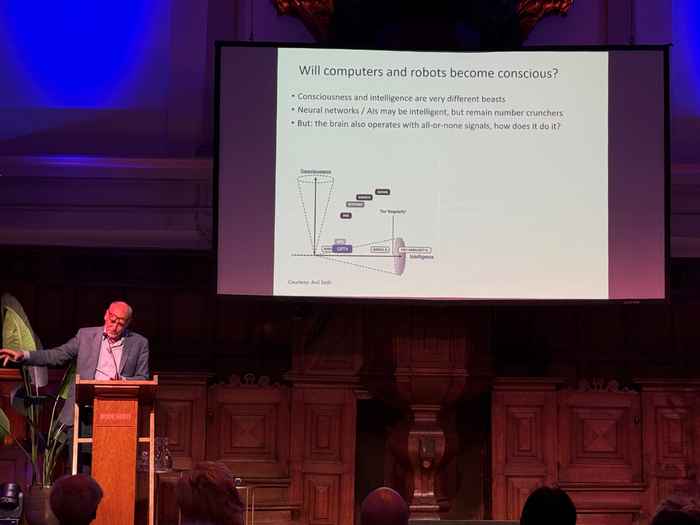25 years of Swammerdam Institute for Life Sciences
28 May 2025
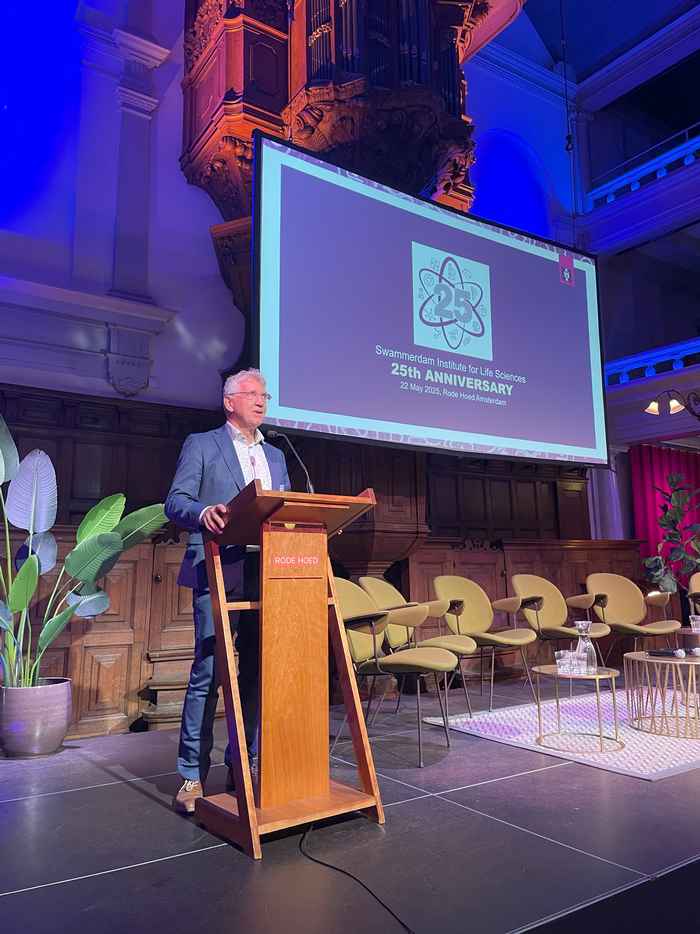
History of the Institute
The Swammerdam Institute for Life Sciences was established 25 years ago because of UvA policy with the need to reorganize faculties. Several different disciplines were brought together under one institute, which was also the case for the Swammerdam Institute for Life Sciences. This included the Institute for Molecular Cell Biology, Institute for Neurosciences, E.C. Slater Institute, and B.C.P. Jansen Institute. Initially, this posed a challenge: four different cultures at three locations, with "the friendly biologists" and "the tougher chemists" suddenly having to work together in one institute.
Originally, the institute consisted of 50% chemistry and 50% biology. It was a nice fusion of disciplines that fit well with the work of Jan Swammerdam. Over the years, the institute was led by a total of 9 institute directors, each facing their own challenges. Some of the main challenges in its history were moving to the Science Park, almost merging with VU—which didn't happen—and then forming a new strategy for SILS, along with handling the COVID-pandemic.
SILS has grown over the years: from 140 to 249 employees, from 35 to 91 PhDs, across 17 research groups with more than 5000 publications and over 1300 students. The original chemistry focus has slowly been made replaced by a focus on neuroscience, data science and microbiome research.
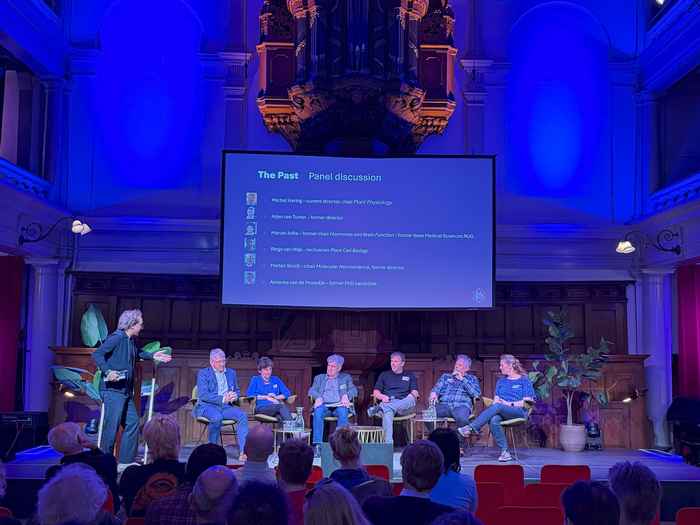
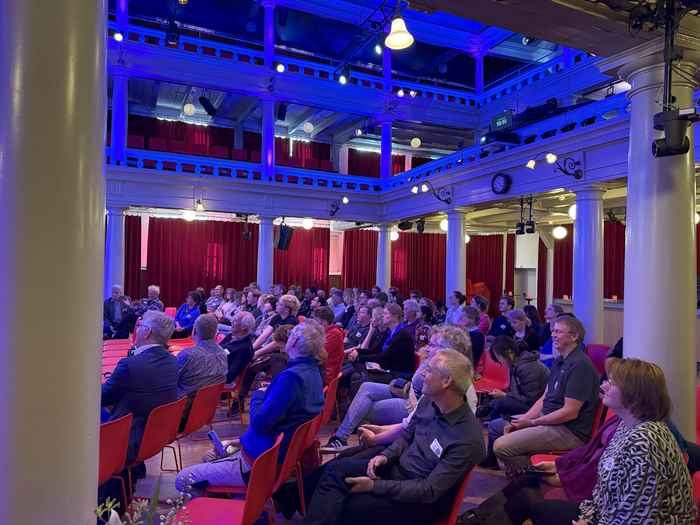
Panel Discussion: Looking Back on the Past
In the panel discussion, there was a retrospective of the past 25 years with Michel Haring, Arjen van Tunen, Marian Joëls, Ringo van Wijk, Marten Smidt, and Anoeska van de Moosdijk.
Highlights that were mentioned included the impressive academic atmosphere and the breadth of research, the diversity of ideas, and ways of working, along with the pleasant working environment. The increasing use of fascinating technology and the successful careers of PhD students who have taken various paths after their PhDs were also noted.
The cultural differences, especially evident at the beginning, cannot be ignored. The period of the VU/UvA merger was also a challenging and stressful time. It is remarkable to see that the disciplines are coming closer together and collaborate more frequently. This evolution of the institute was described as transforming from a forced marriage to partners that enjoy being/working together. There is strong solidarity, where everyone works, learns, and teaches together.
Moving to a single location has brought significant improvements in facilities such as greenhouses and labs. The quality of instruments has greatly improved. There is now more scientific and societal relevance, and the institute works more as a team. Interaction between staff members has bettered; everyone knows what others are doing and tackles difficult research problems, but now together.
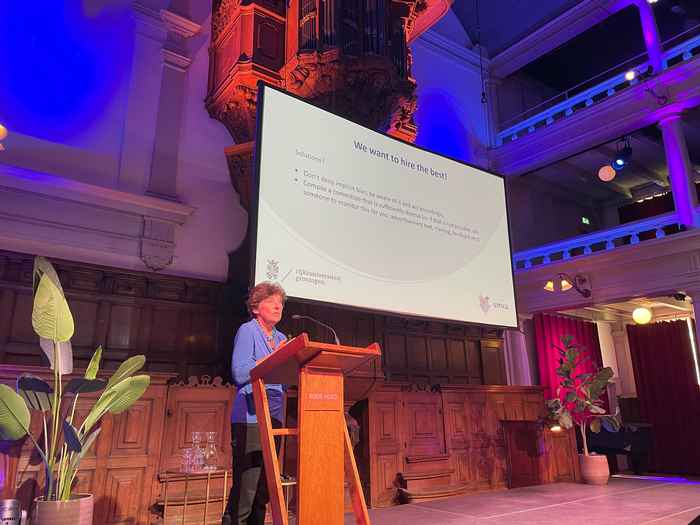
Diversity, Equality and Inclusion (DEI)
Marian Joëls, emeritus professor University of Groningen, gave a keynote on Diversity, Equality, and Inclusion. Data from the past years and societal trends indicate that it remains important to focus on this topic.
"It's essential to consider who you recruit as "the best"—the best in what? Let's look at not only the number of publications but a combination of factors: research, teaching, entrepreneurship, networking, community building, outreach, mentoring, etc. We need all of these to be successful."
Swammerdam Institute: The Present
The Swammerdam Institute has developed into a collaborative community focused on broad and interdisciplinary research, with a continuing emphasis on technological advancement and academic excellence.
Harro Bouwmeester, Sahar El Aidy, and Lars van der Heide showcased their research with a focus on societal impact and personal motivation. The talks were preceded by short videos about the daily life of PhD candidates.
Thijs van Boxtel gave a brief introduction to the work of Jan Swammerdam (1637-1680), highlighting the similarities between his work and the current Swammerdam Institute. These include a diverse selection of organisms, careful experimentation, visualizing the invisible, and an enthusiasm for research. Afterwards, eleven new posters illustrating the current research at the Swammerdam Institute were unveiled, designed by Van Lennep based on the inspiration of a group of researchers from the institute.
View the animated posters >
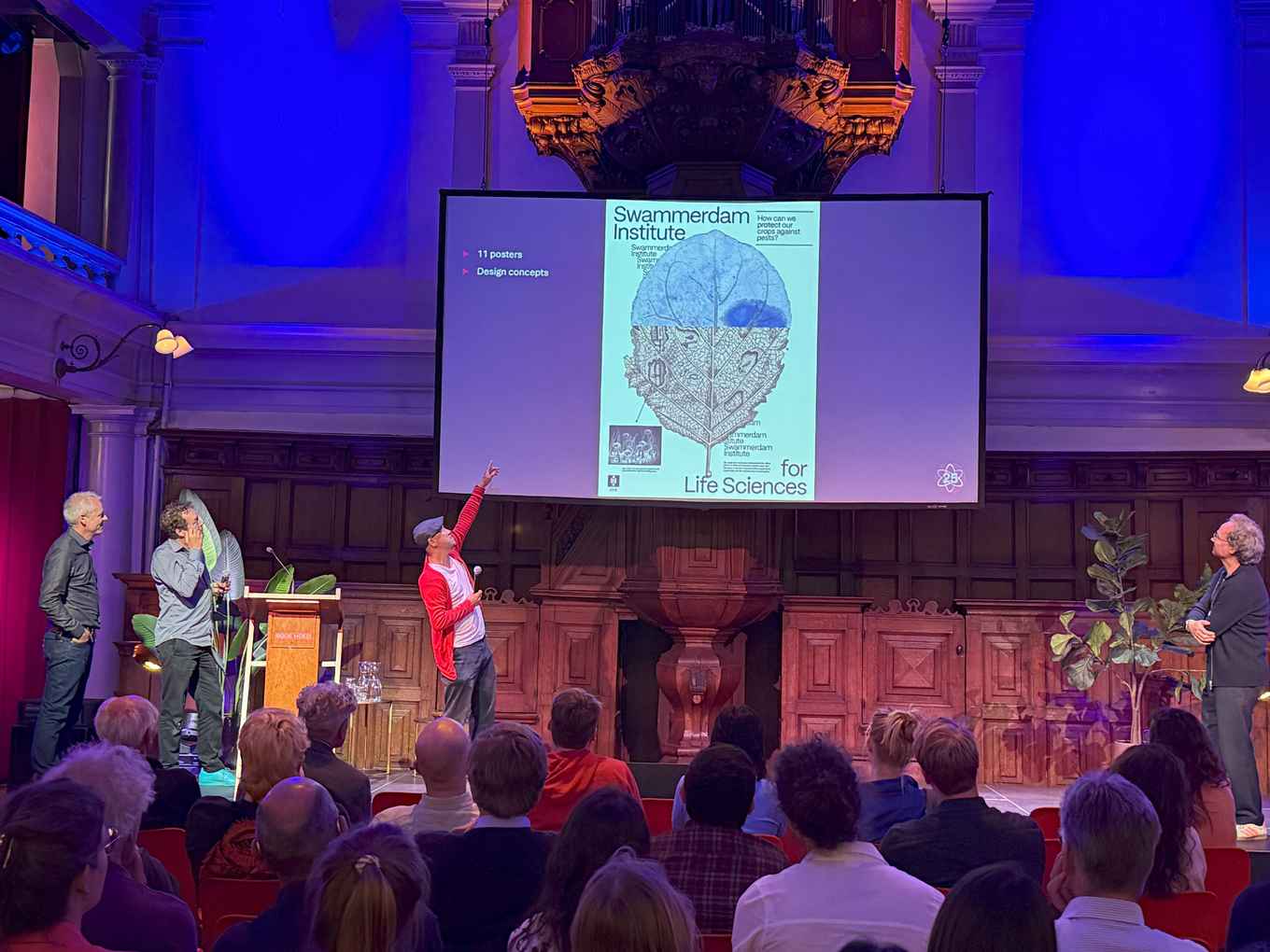
Swammerdam Institute: The Future
In the final part, Erwin van Vliet, Bart Jongbloets, Cyriel Pennartz, and Aalt-Jan van Dijk outlined a vision for the future of the Swammerdam Institute over the next five years. In an interactive manner, colleagues discussed various areas they need to focus on in the coming years, including The Future of AI in education, developments in imaging techniques, brain models and brain-computer interfaces, and AI-driven plant breeding.
The afternoon concluded with a cheerful gathering. Many thanks to the SILS bureau and management team for organizing this wonderful afternoon. Here's to many more years of ever-improving collaboration and connection!
